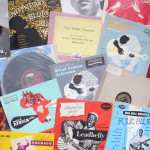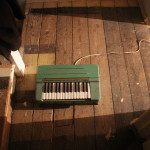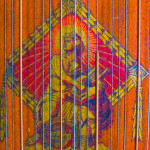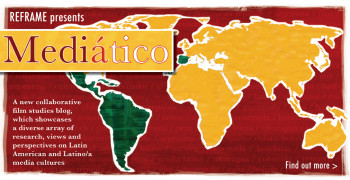About
1Musical Materialities in the Digital Age (MusMat for short) is the name of an academic conference (taking place in June 2014), a broader research project and an online resource (this website). More details about the conference can be found elsewhere on the site and on the MusMat facebook page. This site is designed as a repository for materials related to the conference and the research project and will include updates on both, reports and reviews, analytical pieces, discussions and interviews, links to complementary resources and embedded media. The site is run by Richard Elliott and Elodie Roy (organisers of the MusMat conference) and is hosted by the open access research platform REFRAME.
‘Musical materialities’ refers to a range of topics. For a start, there is the fascinating array of artefacts that accompany musical practices and that provide vital reference points for historical research while inviting new creative uses, rediscoveries and (re)mediations. Such artefacts include instruments, scores, transcribing devices and sound recordings, as well as the various materials that accompany them. They also add to the ever-growing archives of past objects, whether stored in physical or digital forms. Music’s material traces serve as vital ways of mediating memory, whether in private collections or public exhibitions. Furthermore, the use of musical ‘ephemera’ such as record sleeves, programmes, flyers and posters as a primary means for putting the popular musical past on display in museums and galleries has highlighted the ways in which such objects are not so ephemeral after all. More broadly, ‘musical materialities’ refers to any process by which the act of musicking is made material. The reference to ‘the digital age’ serves to highlight the relationship between physical artefacts and their digital/virtual counterparts.











[…] For a start, there is the fascinating array of artefacts that accompany musical practices and that provide vital reference points for historical research while inviting new creative uses, rediscoveries and (re)mediations. Such artefacts include instruments, scores, transcribing devices and sound recordings, as well as the various materials that accompany them. They also add to the ever-growing archives of past objects, whether stored in physical or digital forms. Music’s material traces serve as vital ways of mediating memory, whether in private collections or public exhibitions. Furthermore, the use of musical ‘ephemera’ such as record sleeves, programmes, flyers and posters as a primary means for putting the popular musical past on display in museums and galleries has highlighted the ways in which such objects are not so ephemeral after all. More broadly, ‘musical materialities’ refers to any process by which the act of musicking is made material. The reference to ‘the digital age’ serves to highlight the relationship between physical artefacts and their digital/virtual counterparts. [About MusMat] […]